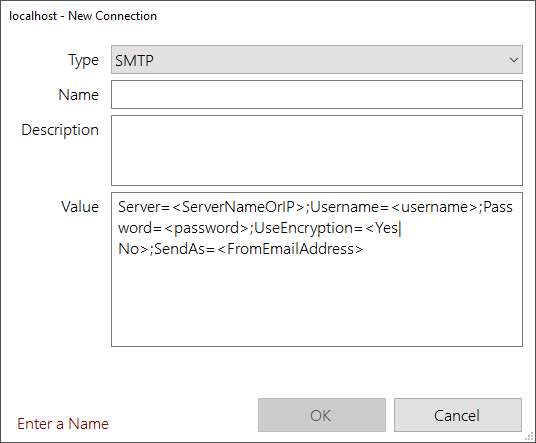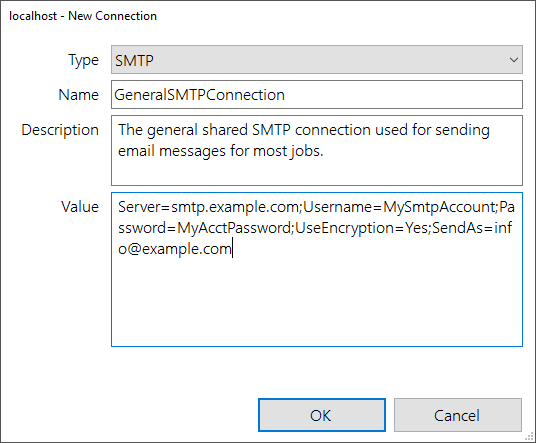Configuring an SMTP Connection
Q100002: Configuring an SMTP Connection
An SMTP connection is used by modules in JobServer.NET to send email messages.
In order for a job to send an email message, it might use a module such as [SMTP] Send Message. For it to send messages, one or more SMTP connections will need to be defined on your JobServer. The connection defines the mail server which will be sending the email message. This must be an email server that you have permission to use for sending outbound emails. This might be a private server on an internal network that allow accepts connections from internal machines. Or if it is a public server, it might require credentials or more in order to accept the message you want to send. First, you need to determine what method you have available for sending email on your network. Once you have that information, we will be able to show you how to create your SMTP Connection. When setting up an SMTP Connection in the global connection manager, once you select the SMTP type, the default template will be shown for the setting. It will look like the following example.

The default template text is the value field in the new connection dialog as shown in the following section.
Server=<ServerNameOrIP>;Username=<username>;Password=<password>;UseEncryption=<Yes|No>;From=<FromEmailAddress>
The value for an SMTP Connection has a few settings, some are optional, and some depend on your specific SMTP Servers configuration and settings. An example value for an SMTP connection might look something like the following:
Server=smtp.example.com;Port=25;Username=MySmtpAccount;Password=MyPassword;UseEncryption=No;From=noreply@example.com;
You would use the same format for your connection definition, but changing the specific values for each of the parameters in the connection value. In our example above, the value for Port is specified, but you can leave that off if your SMTP Server is using port 25, as that is the default. All values besides From and Server are considered optional for the SMTP Server connection. However, the SMTP Server you are using might require authentication. If it does, then effectively the Username and Password settings are required for your specific installation.

For internal email relay servers that might not require any authentication, the settings for an SMTP connection could be simplified down to just the server name (or IP address). Of course this is not a recommended configuration for any SMTP servers which might be exposed outside of a protected internal network.
